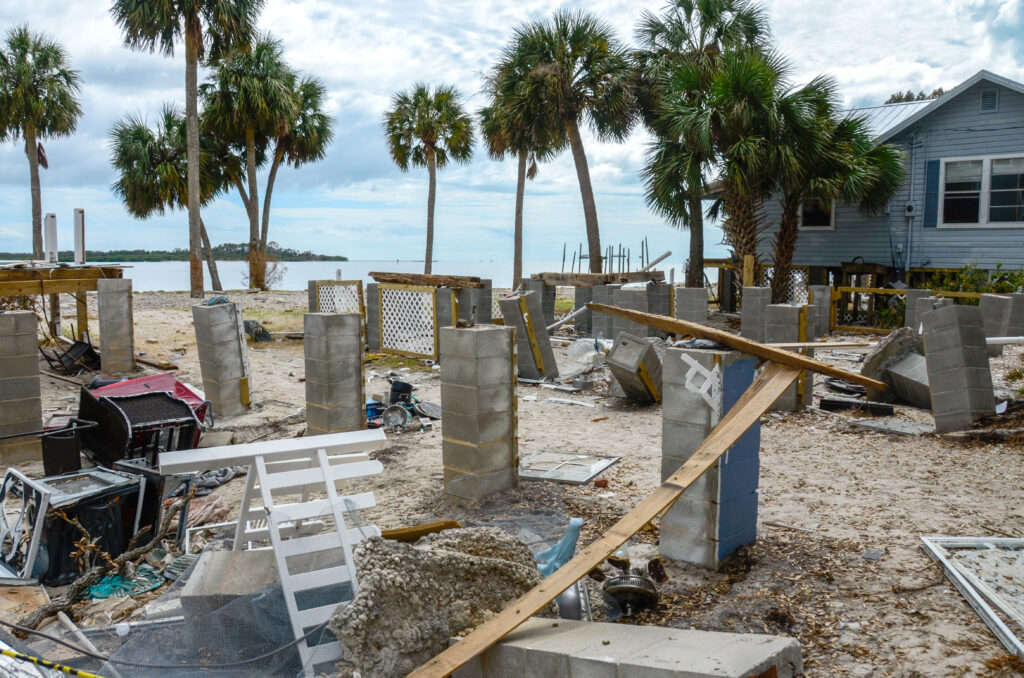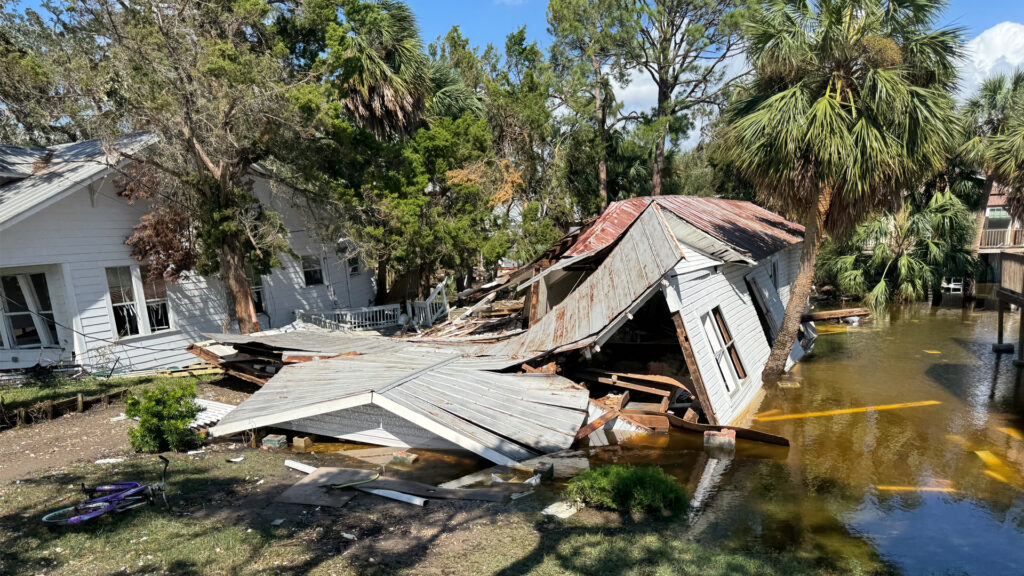By Nathan Crabbe, The Invading Sea
After being battered by three hurricanes in 13 months, Cedar Key has been named as one of the most endangered historic places in the U.S.
The National Trust for Historic Preservation announced today that Cedar Key has been included in its latest list of “America’s 11 Most Endangered Historic Places.” The annual list, now in its 38th year, includes historic locations that are at risk due to factors such as natural disasters, neglect and underutilization.

Cedar Key was listed due to the threats of extreme storms and sea level rise to the community, which is located on a chain of small islands off Florida’s Gulf Coast.
“It’s an important part of Florida’s history and the nation’s history,” said Melissa Wyllie, CEO and president of the Florida Trust for Historic Preservation, the statewide partner of the National Trust. “To be recognized like this demonstrates its importance and the need to protect it.”
Cedar Key’s history includes early activity by Native Americans and providing shelter for Spanish sailors in the 18th century. It was a significant port and western terminus of the Florida Railroad in the late 19th century, becoming one of Florida’s largest cities at the time.
The city now has around 700 full-time residents and has been a top producer of farm-raised clams in the U.S. The National Trust refers to Cedar Key as “an increasingly rare example of ‘Old Florida,’ commonly described as small coastal communities based on a mix of fishing, local business, and small-scale, affordable tourist accommodations.”
Cedar Key has faced damage from a string of severe storms in recent years, including Hurricane Idalia in 2023 and hurricanes Debby and Helene in 2024. Helene produced a record storm surge there, devastating structures such as its post office, historic wood-frame homes and waterfront businesses.
The community also faces increasing flooding threats due to sea level rise, which has risen nearly six inches in the area since 1992 and is projected to rise much more in the years ahead. In 2020, the National Oceanic and Atmospheric Administration’s tide gauge in Cedar Key recorded the fourth-highest rate of sea level rise acceleration in the county.

Wyllie said that Cedar Key is again welcoming visitors after the recent hurricanes while seeking grants and state funding for resilience efforts that prepare it for future storms and flooding.
“It is a community still in recovery for sure, but in a lot of ways they have learned to be resilient and recover quickly,” Wyllie said.
The Florida Trust and the University of Florida have worked with the city of Cedar Key on the Resilient Cedar Key adaptation plan, which was finished just weeks before Hurricane Helene hit. Recommended solutions include elevating and wet-proofing historic buildings, improving drainage to protect a historic cemetery and using nature-based solutions such as living shorelines, which have already been credited with protecting the community from storm surge.
The National Trust for Historic Preservation has produced a list of America’s most endangered historic places since 1988. It uses the list as a “tool for shining a light on the threats facing our nation’s greatest treasures,” noting that the ongoing initiative has galvanized public support behind more than 350 sites to date with just a handful lost.
Other locations on this year’s list include the historic city of Asheville and other towns in western North Carolina that suffered widespread damage from Hurricane Helene. For the full list and more information, visit www.SavingPlaces.org/11Most.
Nathan Crabbe is editor of The Invading Sea. Sign up for The Invading Sea newsletter by visiting here. To support The Invading Sea, click here to make a donation. If you are interested in submitting an opinion piece to The Invading Sea, email Crabbe at nc*****@*au.edu.
Banner image: Cedar Key after Hurricane Helene in October 2024 (Photo by Timothy Macy, courtesy of the National Trust for Historic Preservation). To learn more about sea level rise, watch the video below.



